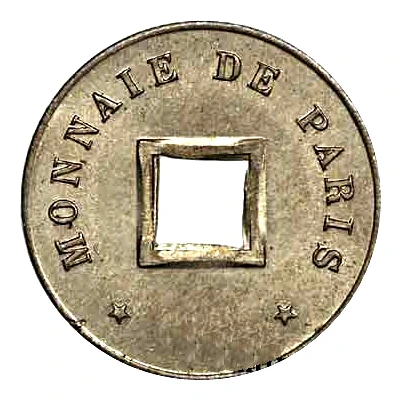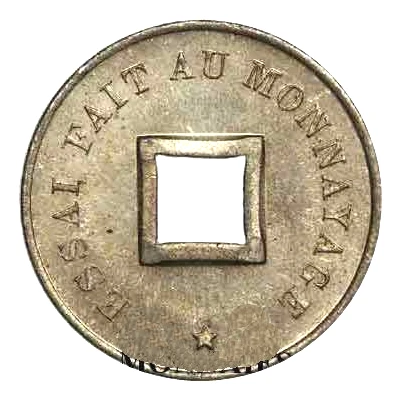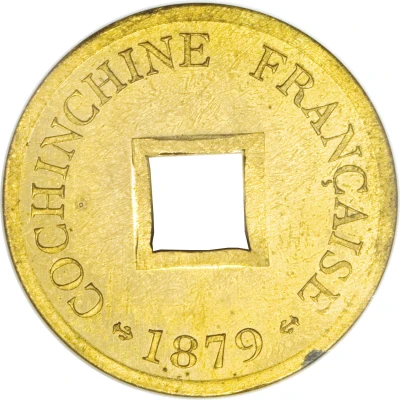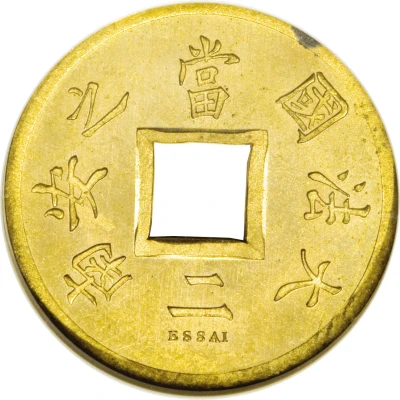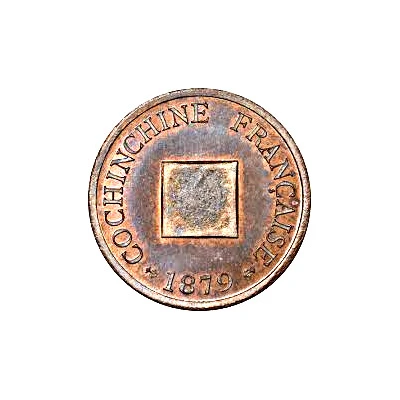
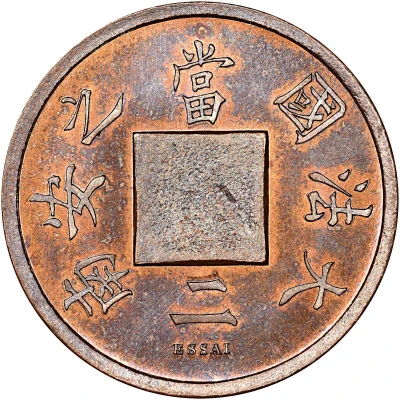

© CGB
Sapèque Essai; No hole; with "ESSAI"
1879 year| Bronze | 2 g | 20 mm |
| Issuer | French Cochinchina (Vietnam) |
|---|---|
| Period | Third Republic (1870-1940) |
| Type | Pattern |
| Year | 1879 |
| Value | 1 Sapeque (0.002) |
| Currency | Piastre (1878-1885) |
| Composition | Bronze |
| Weight | 2 g |
| Diameter | 20 mm |
| Thickness | 0.5 mm |
| Shape | Round |
| Technique | Milled |
| Orientation | Coin alignment ↑↓ |
| Demonetized | Yes |
| Updated | 2024-10-09 |
| Numista | N#120484 |
|---|---|
| Rarity index | 100% |
Reverse
Chinese lettering around central square (nt perforated)
Script: Chinese
Lettering:
南安之 國法大
當
二
ESSAI
Translation:
French Cochinchina
Worth two
Trial
Engraver: Jean-Auguste Barre
Edge
Plain
Comment
Differs from KM#E5 by not having mintmark on obverse, and having word "ESSAI" reverse.The Chinese text has an incomplete value. It could be interpreted as “worth two cash/dongs” (ten cash in a cent, two dongs in a Sapèque) or “worth 2/1000 Piastre”.
Interesting fact
One interesting fact about the Pattern Sapèque (Essai; No hole; with "ESSAI") 1879 from French Cochinchina (Vietnam) made of Bronze weighing 2 g is that it is a rare and valuable coin among collectors due to its limited mintage and historical significance. It was produced during the brief period of French colonization in Vietnam, specifically in the region of Cochinchina, which is now part of modern-day Vietnam. The coin's design features a unique blend of French and Vietnamese elements, showcasing the cultural exchange and influence that occurred during this time period. Additionally, the use of bronze as the material for the coin was a deliberate choice by the French colonizers to create a currency that was both durable and affordable for the local population. Today, this coin is highly sought after by collectors and historians interested in the history of Vietnam and French colonialism.
